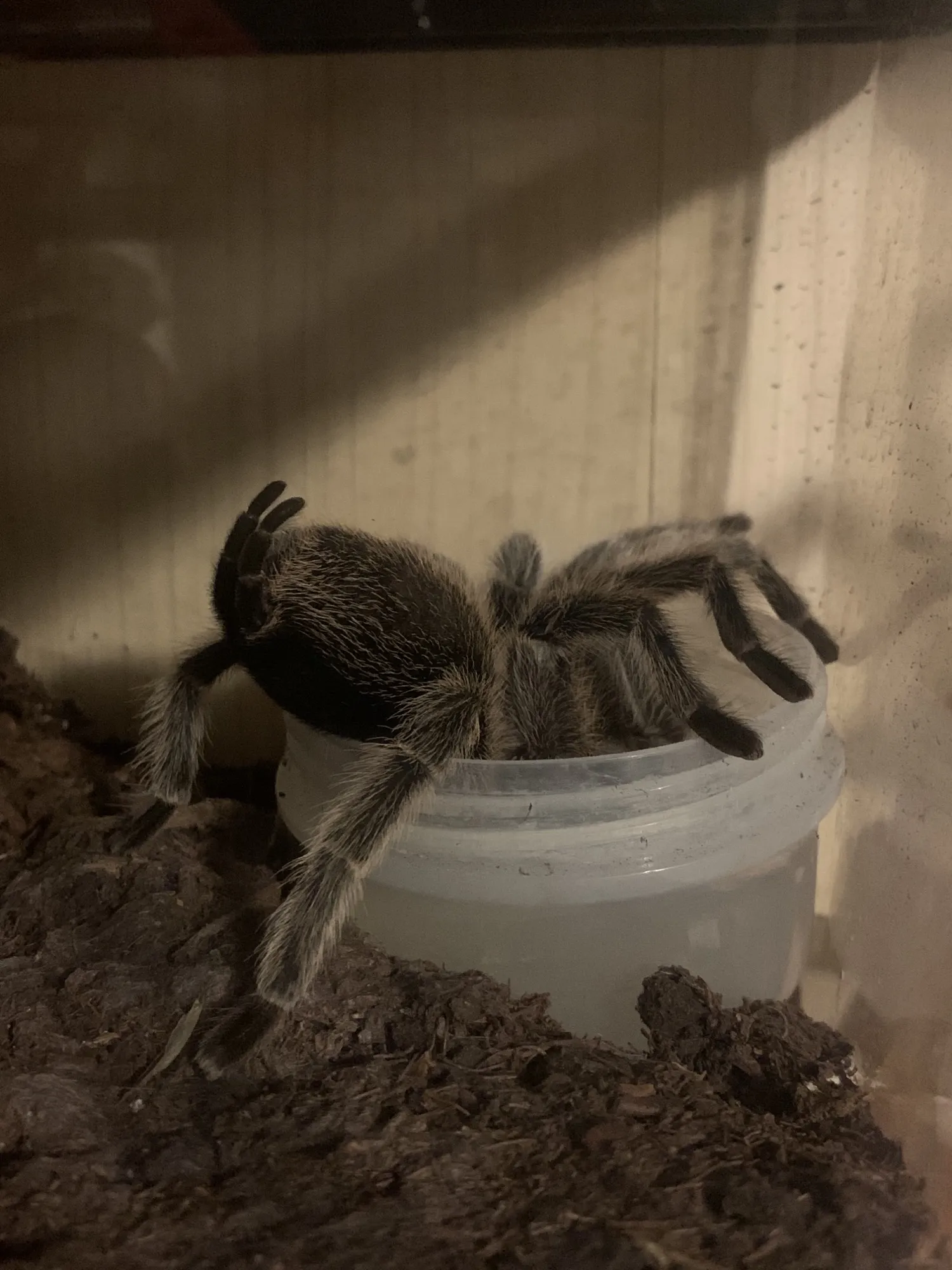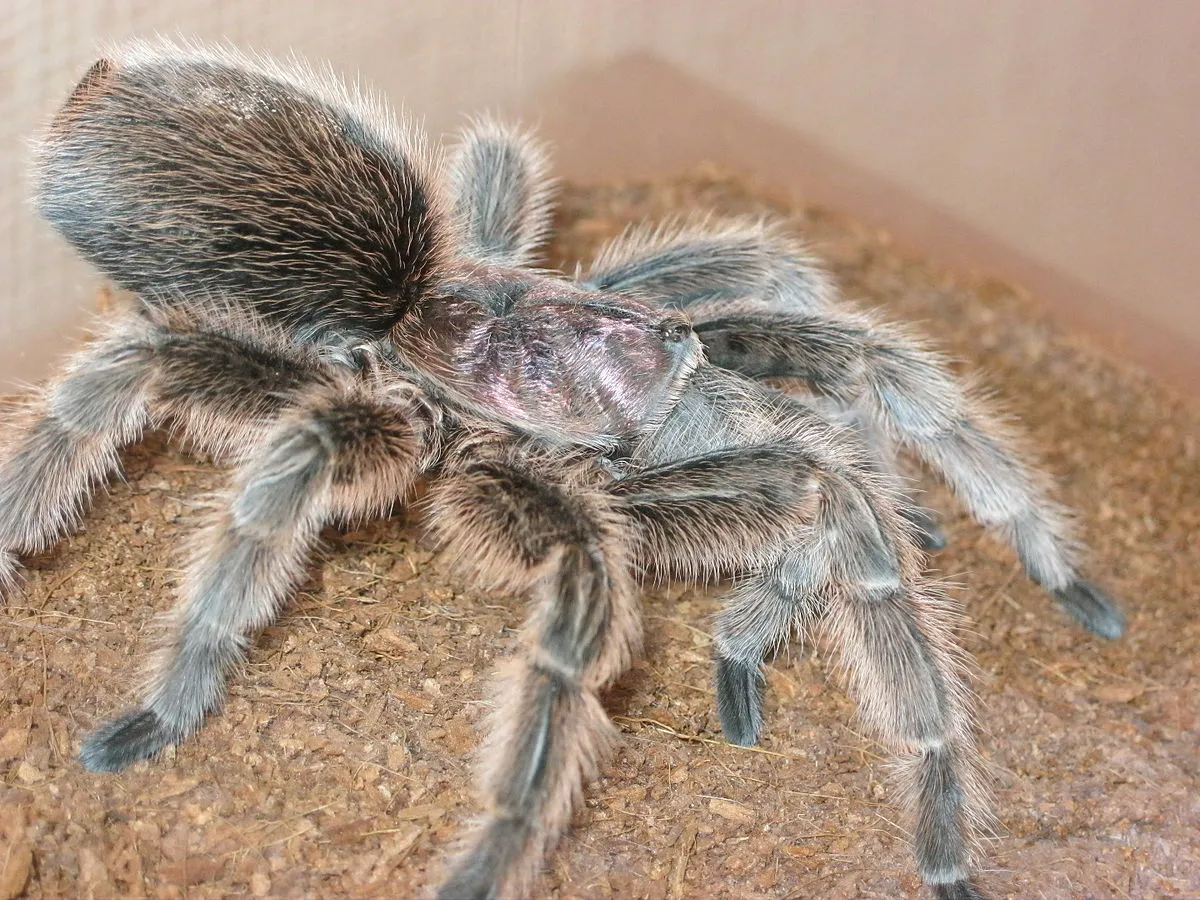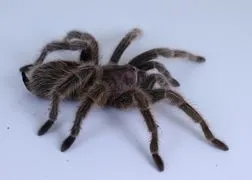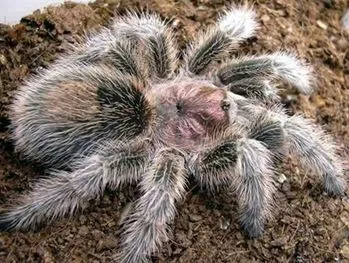What Do Rose Hair Tarantulas Eat?
Rose Hair Tarantulas, scientifically known as Grammostola rosea, are fascinating creatures, and understanding their eating habits is crucial for their well-being. These arachnids are primarily insectivores, meaning their diet consists mainly of insects. In their natural habitat, they are opportunistic feeders, consuming whatever they can catch. As pet owners, we need to replicate their natural diet to keep them healthy and thriving. The variety and quality of food play a significant role in their overall health, growth, and longevity. A well-balanced diet supports their molting process, energy levels, and immune system. Therefore, a clear understanding of their dietary needs is essential for any aspiring tarantula keeper. Feeding these creatures the right food is not only about providing sustenance; it’s about providing a fulfilling and enriching life for these amazing animals.
Crickets as a Staple Food
Crickets are a staple food for rose hair tarantulas and are readily available in most pet stores. They are relatively easy to care for, making them a convenient option for regular feeding. Crickets are packed with protein, which is essential for the growth and development of your tarantula. They provide a good source of chitin, which helps the tarantula during molting. However, it’s important to ensure the crickets are properly gut-loaded before feeding them to your tarantula. Gut-loading involves feeding the crickets a nutritious diet (such as commercial cricket food or fresh vegetables) a few days before offering them to the tarantula. This process enriches the nutritional value of the crickets, ensuring your tarantula receives a well-rounded meal. This simple step dramatically improves the nutritional benefits your tarantula receives from its food, contributing to its overall health and longevity. The proper use of crickets makes it an ideal staple food.
The Nutritional Value of Crickets

Crickets offer a balanced nutritional profile that is suitable for rose hair tarantulas. They are a good source of protein, crucial for muscle development and growth. Protein is essential for various biological processes, including enzyme production and immune function. Crickets also provide chitin, a key component of the exoskeleton of both crickets and tarantulas. This is particularly important during molting, as it supports the formation of a new exoskeleton. Furthermore, crickets contain essential vitamins and minerals, like calcium and phosphorus, which are vital for the overall health of the tarantula. Calcium helps with the proper formation of the exoskeleton, while phosphorus supports various metabolic processes. When purchasing crickets, always choose healthy, active ones to ensure your tarantula receives the maximum nutritional benefits.
Why Crickets Are Ideal for Rose Hair Tarantulas
Crickets are the ideal food because they offer a convenient and nutritionally sound option for rose hair tarantulas. They are readily available, making it easy for owners to maintain a consistent feeding schedule. The size of crickets can be easily matched to the size of the tarantula, ensuring the tarantula can consume the prey without difficulty. Crickets are relatively easy to handle and don’t pose a significant risk to the tarantula. The gut-loading process also enhances the nutritional value of the crickets, making them even more beneficial. Their availability, size suitability, and nutritional profile make crickets a perfect choice for the primary food source. Properly gut-loaded crickets, combined with a varied diet, can help to keep your tarantula in peak health, which is vital for the overall well-being of your pet. Using crickets is a simple, effective, and practical way to provide your tarantula with everything it needs.
Other Insects Rose Hair Tarantulas Consume
While crickets are a good staple, varying the diet of your rose hair tarantula offers a variety of nutrients and keeps your pet interested in feeding time. Offering different insects provides a more balanced diet and stimulates the natural hunting instincts of the tarantula. Variety in the diet also prevents nutritional deficiencies that can occur with a sole reliance on crickets. Including other insects will enrich their diet. The following insects are good options to supplement a rose hair tarantula’s diet, ensuring that they get all the nutrition they need to thrive. Variety is very important.
Mealworms

Mealworms, the larval stage of the darkling beetle, are another commonly used food source for rose hair tarantulas. They are easy to obtain and store, making them a convenient option. Mealworms have a high protein content, which is good for the growth and development of tarantulas. However, mealworms have a hard exoskeleton that can be difficult for smaller tarantulas to digest. So, it’s important to only offer mealworms to tarantulas that are large enough to handle them. Also, mealworms have a higher fat content, so they should be offered in moderation. The high protein and fat content is good for your tarantula, but it should be balanced with other food sources.
Roaches
Roaches, particularly dubia roaches, are an excellent food source for rose hair tarantulas. Roaches are higher in protein and lower in fat compared to crickets and mealworms, making them a nutritious option. They are also softer-bodied, making them easier for tarantulas to digest. Roaches are relatively easy to breed, meaning you can establish a consistent supply. They also exhibit a natural behavior that can stimulate the tarantula’s hunting instinct. Always ensure the roaches are sourced from a reputable breeder or supplier to minimize the risk of parasites or diseases. Roaches are a valuable addition to your tarantula’s diet, providing a balanced and nutritious meal.
The Importance of Variety in Diet
Providing a variety of insects is vital for your tarantula’s overall health and well-being. A diverse diet ensures the tarantula receives a wide range of nutrients, preventing potential deficiencies. Different insects offer different nutritional profiles, so by feeding a mix of food sources, you ensure a more balanced diet. Variety also adds enrichment to the tarantula’s life by stimulating its natural hunting behaviors. Rotating the food sources keeps your tarantula interested in feeding time, encouraging a healthy appetite. A varied diet will keep your pet healthy. Providing a diverse diet is crucial for maintaining the health of a rose hair tarantula and ensuring a long and fulfilling life.
How Often Do Rose Hair Tarantulas Eat?

The frequency of feeding your rose hair tarantula depends on its age and size. Spiderlings and juvenile tarantulas require more frequent feeding to support their growth. Adult tarantulas, on the other hand, can go longer periods between meals. Overfeeding can lead to health problems, so it is essential to feed your tarantula an appropriate amount. Pay close attention to the tarantula’s abdomen size and behavior to determine the right feeding schedule. Monitor the size of the abdomen and adjust the feeding accordingly.
Feeding Frequency for Spiderlings
Spiderlings, or baby tarantulas, have a higher metabolism and require more frequent feeding to support their rapid growth. Feed spiderlings every other day or every three days. Offer appropriately sized prey, such as small crickets or mealworms. Observe the spiderling’s behavior and abdomen size to adjust the feeding frequency. A plump abdomen indicates a well-fed tarantula, while a shrunken abdomen suggests a need for more food. Remember, overfeeding is less of a concern than underfeeding during the spiderling stage, but monitoring their body condition is still crucial. Spiderlings are more vulnerable and require more frequent feeding to thrive and grow healthily.
Feeding Frequency for Adult Tarantulas
Adult rose hair tarantulas have a slower metabolism, and, therefore, don’t need to eat as often as juveniles. Adult tarantulas can be fed once a week or even once every two weeks. The feeding frequency can also depend on the size of the prey offered. A large meal might keep the tarantula full for a longer period. Monitor the abdomen size of the adult tarantula. If the abdomen appears full and round, it’s a sign that the tarantula is well-fed. If the abdomen appears small or if the tarantula is actively hunting, it may be time to feed it. During molting, adult tarantulas typically stop eating altogether. In any case, adjust the feeding frequency based on the individual needs of the tarantula, paying attention to its appetite and overall health.
How Rose Hair Tarantulas Hunt?

Rose hair tarantulas are ambush predators, meaning they wait patiently for their prey to come within striking distance. They don’t actively chase their food; instead, they rely on their keen senses to detect movement and vibrations. When a potential meal comes close, the tarantula will quickly pounce and inject venom to subdue its prey. The entire process happens rapidly, showcasing the efficiency of their hunting strategy. Watching the tarantula hunt is an amazing experience.
The Ambush Predator Strategy
As ambush predators, rose hair tarantulas have evolved to be masters of patience. They typically position themselves in a suitable location within their enclosure, either in a burrow or out in the open. When an insect comes within range, the tarantula will use its quick reflexes to strike, capturing the prey. This approach conserves energy, making them highly efficient hunters. The ambush strategy is well-suited to their environment, where they often encounter various prey items.
The Role of Fangs and Venom
Rose hair tarantulas use their fangs and venom to subdue prey. The fangs are used to puncture the exoskeleton of the insect, while the venom quickly immobilizes the victim. The venom also starts the digestive process, breaking down the internal tissues of the prey. The tarantula then uses its mouthparts to suck up the liquefied contents, leaving the exoskeleton behind. This hunting mechanism is efficient and allows them to consume their meals effectively. The fangs and venom play a critical role in the survival and feeding of these fascinating creatures.
What to Avoid Feeding Your Tarantula?

While it’s important to offer a varied diet, there are certain foods that you should avoid feeding your rose hair tarantula. These foods can be harmful or even fatal to the tarantula. Understanding what to avoid is critical to the health and well-being of your pet.
Human Food
Avoid feeding human food to your rose hair tarantula. Human food often contains ingredients that are harmful to tarantulas, such as salts, spices, and preservatives. Processed foods, in particular, should be avoided. Feeding your tarantula human food can lead to digestive issues, dehydration, and other health problems. Stick to a diet of insects, which is natural and nutritionally appropriate for your tarantula. The right diet will ensure the tarantula’s health.
Wild-Caught Insects
Wild-caught insects can carry parasites, pesticides, and diseases that can be deadly to your tarantula. These insects may have come into contact with harmful substances, which can poison your pet. It’s best to source insects from reputable pet stores or breeders. Always prioritize the health and safety of your tarantula by avoiding wild-caught insects.
The Significance of Hydration

Proper hydration is just as important as diet for rose hair tarantulas. They require a constant source of fresh water to stay healthy. Dehydration can be fatal for tarantulas, so it is crucial to ensure they have access to water at all times. The correct hydration will ensure the tarantula’s well-being.
Water Bowl Essentials
Provide a shallow water bowl that is easily accessible to your tarantula. The water bowl should be appropriately sized, ensuring the tarantula can reach it without difficulty. Use a small, stable water bowl to prevent spills. Make sure to change the water regularly, typically every 1-2 days, to keep it fresh and clean. Clean water will keep your tarantula healthy.
Maintaining a Clean Water Source
Maintaining a clean water source is essential to prevent the growth of bacteria and other harmful organisms. Regularly clean the water bowl with warm, soapy water and thoroughly rinse it. Avoid using harsh chemicals or detergents, as these can be toxic to your tarantula. Also, placing the water bowl away from the tarantula’s burrow will minimize the risk of substrate getting into the water. Clean water ensures the health of the tarantula and prevents any potential health issues.
Signs of a Healthy Rose Hair Tarantula
Identifying signs of a healthy rose hair tarantula is crucial for ensuring its well-being. A healthy tarantula will exhibit specific behaviors and physical characteristics that reflect its overall health. Being able to recognize these signs enables you to provide the best possible care for your pet.
A healthy rose hair tarantula should have a plump abdomen, indicating it is well-fed. It should be active and responsive to its environment, and should readily accept food. The exoskeleton should be intact and free from injuries or deformities. Its fangs should be clean and in good condition. It should also molt regularly, shedding its old exoskeleton. A healthy tarantula will also show normal behavior patterns. The tarantula should show no signs of lethargy, which can indicate an underlying health issue. By being attentive and vigilant, you can make sure your pet remains healthy.
The eating habits of a rose hair tarantula are relatively straightforward, but they are essential for its health and well-being. By providing a balanced diet of insects, ensuring proper hydration, and understanding their hunting behaviors, you can create a healthy and enriching environment for your pet. Remember to always prioritize the health and safety of your tarantula, providing it with the best care possible.
